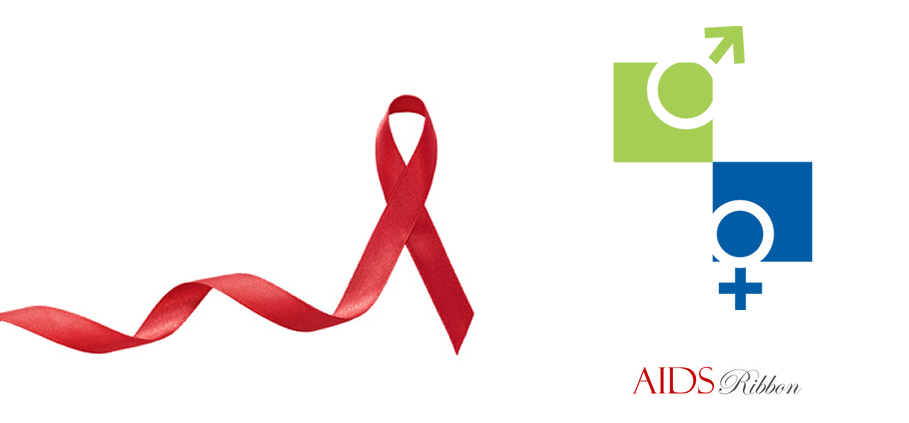Latest News
Hermaphroditism, Pseudohermaphroditism, Intersexuality
MYTHS AND REALITY
Disorders of Sex Development &
Congenital Adrenal Hyperplasia
Anastasios D. Kalantzis, Surgeon Urologist-Andrologist
Some time ago, and due to my medical specialty, a friend sent me an e-mail titled "The story of a boy who was a fine tall girl!" This brought immediately to my mind the issue created in the World Championship of Berlin, in 2009, regarding the South African World Champion in Women's 800m race Caster Semenya, whose gender was questioned and was put under testing by IAATE.
Hermaphroditus appears in the Greek and Roman mythology and art as a creature who was born with a physical body which bears and combines both male and female attributes. The earliest mention to Hermaphroditus was made by Theophrastus, in the 4th century B.C. We also know about a drama written by the Greek comic poet Posidippus, who lived in the first half of the 3rd century B.C., which was unfortunately lost. The full narration of the myth of Hermaphroditus was made by the Latin poet Ovidius, in the 1st century A.D.
In Antiquity (Greco-Roman) art, Hermaphroditus appears naked or partly dressed, having either the body of an adolescent boy with female breasts and male genitalia, or with a lissome, beautiful and delicate body and male genitalia.
Hermaphroditus was the son of Hermes and Aphrodite who was nursed by naiads in the caves of Mount Ida in Frigia. At the age of 15, he left the place where he grew up and wandered in Asia Minor. He went to many places including Caria, where he stopped to rest near a water spring named Salmacis, whose waters formed a pool. The pool nymph, the coquettish Salmacis, was overcome by lust from the boy's beauty and fell passionately in love with him. Hermaphroditus, however, was unmoved and indifferent to her passion. Her efforts to seduced him were in vain, and then she pretended not to care for him anymore and stepped away. When he thought her to be gone, Hermaphroditus entered the pool. Salmacis, seeing him defenseless in her kingdom, dove into the pool. As much as he tried, Hermaphroditus couldn't escape the embrace of the nymph who, blinded by her passion, she called out to the Gods that they should never part. Her wish was granted and their bodies blended into one, creating a new creature of both sexes, neither clearly female nor clearly male.
Feeling his body being blended with the female, cursed the pool and begged his parents that anyone else who bathed in that pool would be similarly transformed, lose his masculinity and become effeminate. Hermes and Aphrodite granted their son's wish and gave the spring this mysterious power. The strange, dual nature of Hermaphroditus drew the interest of many writers of the late period, such as Lucian, Martialis and Ausonius.
In the article on pediatric-adolescent urology, we referred to another congenital urinary system disorder, a very rare one, appearing in 1 out of 4,500 births. It is called congenital adrenal gland hyperplasia and constitutes the commonest and most frequent cause for the appearance of sexual ambiguity (ambiguous genitalia). It is included in the "Disorders of Sex Development – DSD", a term which came to replace the older terms "pseudo-hermaphroditism" and "hermaphroditism".
Trying a generalized and simplified description of the common pathway of sex differentiation, we can say that the male or female gender of the embryo is determined by the chromosomes inherited during the ovum's fertilization by the sperm. The genetic material (DNA) of a "normal" person has 46 chromosomes, which form 23 pairs. In 22 of those pairs (autosomes) both chromosomes are identical, one coming from the father and one from the mother. The 23rd pair, which determines the sex is different. In case that the chromosomes of the 23rd pair are "XX" the embryo's sex is female, while and "XY" 23rd pair denotes male sex.
Female "pseudoermaphroditism" caused by congenital adrenal hyperplasia (CAH) is the commonest reason for the appearance of ambivalent genitalia, which is caused by deficit of enzymes necessary for steroidogenesis. The adrenal glands are two hazelnut-shaped, endocrinal glands, located near the upper renal surface. In CAH the adrenal glands produce reduced aldosterone and cortisol and abnormally high levels of virilizing hormones (androgens). The abnormal adrenal gland steroidogenesis occurring in CAH affects the development/differentiation of external genitalia.
There are the following types of CAH:
- type Ι : virilization
- type ΙΙ : virilization and loss of salt
- type ΙΙΙ: virilization and high blood pressure
- type ΙV : with male or female pseudohermaphroditism
- type V: gonadal secretion disorder
- type VΙ : gonadal secretion disorder (deficiency of an enzyme different from that of type VI)
The external genital organs of the female embryo will be virilized when exposed to the adrenal glands androgens early in fetal development, while the uterus and the fallopian tubes remain intact. Reversely, if the enzymatic anomaly inhibits the androgens production, and especially fetal testosterone, the male embryo will not be properly masculinized. The eternal genitalia of the chromosomatically male embryos with deficiencies in the enzymes that compose fetal testosterone present incomplete masculinization, especially if the disorder is expressed also in the testes.
The clinical image depends on the degree of enzyme deficiency. In most CAH cases (Η κλινική εικόνα εξαρτάται από το βαθμό της ενζυματικής ανεπάρκειας. Στις περισσότερες περιπτώσεις της CAH (21a-hydroxylase, 11-ß hydroxylase deficiency) masculinization is obvious at birth in girls and in childhood in boys.
Labial adhesion and clitoris hypertrophy are observed at birth. This image is similar to that of a boy with bilateral cryptorchidism and hypospadias. The adhesion of the labia can be so extensive as to form a penile urethra. With this appearance and under the circumstances, mistakes in sex identification are frequent.
Sometimes the children presents vomiting and dehydration within a few weeks from birth, and also hyponatremia and hyperkalemia may occur, resulting from aldosterone deficiency. This may lead to the infant being at risk to develop salt wasting syndrome.
In milder forms of the condition, masculinization is observed during adolescence or even in the adult life with hirsutism, acne, oligomenorrhea or amenorrhea, dysovulation and even sterility in women. Some women with this condition develop multicystic ovaries syndrome. Female patients may have menstruation disorders, as well as unovulation combined with light virilization. Due to the increased androgen levels, female athletes with this condition are excluded from doping tests. Cases of this syndrome forms have been observed also in men.
There is also a "silent" CAH type which does not have any clinical symptoms. Diagnosis is random, during genetic examination of histocompatibility antigens and the hormonal control.
The ambiguous genitalia are a difficult medical problem, involving metabolic, moral/ethical, social and psychological problems. The decision regarding the upbringing of a child with ambiguous genitalia, i.e. whether to be raised as a boy or a girl, must be taken immediately. The control of the chromosomal and gonadal sex as well as of the internal genital organs within the first 48 hours of the child's life is imperative for deciding on the most proper sex.
Information and consultation of the parents are also crucial for the physical and psychological development of the child.
Documentation
1. Spyros Manouselis – "Hermaphroditism: the tormenting co-existence of the two human sexes", 13/06/2009, Eleftherotypia Newspaper
2. E. Sekerli, A. Tsiga, E. Siomou,I. Russo, M. Gatzola, N. Voyatzis – Genetics Laboratory, 2nd Clinic of Pediatrics of Aristoteleion University of Thessaloniki, AHEPA Hospital – Clinical Study "Numeral and Structural Abnormalities of Sex Chromosomes and Their Clinical Expression", 2003, www.paidiatriki.gr
3. Merope Toumba, Constantinos Kanaris, Nikos Skordis, Paedoendocrinology Clinic, Makareio Hospital, Cyprus – "Genetic Mistakes in Gender Differentiation", www.child.org.cy
4. "Anomalies in Gender Differentiation ", www.iatriki-genetiki.med.uoa.gr




